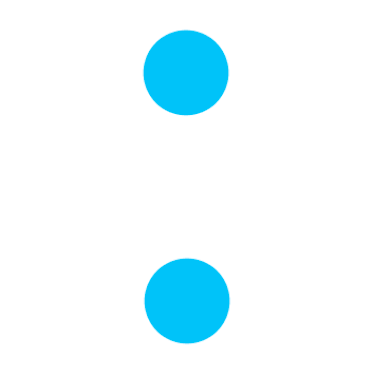MODULE - 1 Est. Duration: 57 min
MODULE - 2 Est. Duration: 48 min
MODULE - 3 Est. Duration: 1 hr 9 min
MODULE - 4 Est. Duration: 41 min
MODULE - 5 Est. Duration: 42 min
MODULE - 6 Est. Duration: 23 min
MODULE - 7 Est. Duration: 56 min
MODULE - 8 Est. Duration: 25 min
MODULE - 9 Est. Duration: 17 min
MODULE - 10 Est. Duration: 24 min
Unit 12 .3
More on 'chhoTii he'
Est. Duration: 4 Minutes
Bookmark This
AS A VOWEL
‘chhoTii he’ is very interesting because it can also act as the vowels ‘a’ (अ) and ‘e’ (ए) in the final position in some words. Let’s take a closer look at these two cases below.
12.3.1: As the vowel ‘e’
To understand how the ‘chhoTii he’ acts as the vowel ‘e’ (ए), let’s look at the word “be” (बे), meaning “with”:
- be
- बे
Above: The word “be”. Notice the short-form assumed by the ‘chhoTii he’.
Notice the vowel-notation short-form assumed by the ‘chhoTii he’ here, as shown by the comparative below:
- chhoTi he
- छोटी हे
- chhoTi he
- छोटी हे
Above: Comparative illustrating the vowel-notation short-form assumed by ‘chhoTii he’ in the final position
IMPORTANT
Pay attention to the form assumed by the ‘chhoTii he’ here. This short-form indicates that the ‘chhoTii he’ acts as a vowel here and is different from when it acts as a consonant.
Here’s another illustration comparing the consonant and vowel-notation forms of the ‘chhoTii he’:
- chhoTi he
- छोटी हे
- chhoTi he
- छोटी हे
Above: Comparative illustrating the consonant and vowel-notation short-forms assumed by the ‘chhoTii he’
And therefore, here’s an illustration comparing the word “bah” (बह) and “be” (बे), following the rules above:
- be
- बे
- bah
- बह
Above: Comparison between the words “bah” and “be”
Similarly, here’s another common word - “ye” (ये), meaning “this/these”:
- ye
- ये
- chhoTii he
- छोटी हे
- chhoTii ye
- छोटी ये
Above: ‘chhoTii ye’ + ‘chhoTii he’ = “ye”
Or, in short-form notation:
- ye
- ये
- chhoTi he
- छोटी हे
- chhoTi ye
- छोटी ये
Above: Short-form of ‘chhoTii ye’ + short-form of ‘chhoTii he’ = “ye”
12.3.2: As the vowel ‘a’
To see how the ‘chhoTii he’ acts as the long-vowel ‘a’ (अ), let’s look at the word “charKHa” (चर्ख़ा), meaning “spindle/spinning wheel”:
- charKHa
- चर्ख़ा
- chhoTii he
- छोटी हे
- KHe
- ख़े
- re
- रे
- che
- चे
Above: ‘che’ + 're' + ‘KHe’ + ‘chhoTii he’ = “charKHa”
In the word “charKHa” above, we can again see the vowel-notation form of the ‘chhoTii he’ being used. Here it is again in the word “KHaarija” (ख़ारिजा), meaning “foreign/external”:
- KHaarija
- ख़ारिजा
- chhoTii he
- छोटी हे
- jiim
- जीम
- re
- रे
- alif
- अलिफ़
- KHe
- ख़े
Above: ‘KHe’ + ‘alif’ + ‘re’ + ‘jiim’ + ‘chhoTii he’ = “KHaarija”
12.3.3: Some more words
And again, here are a few more words for you to learn!
- aah
- आह
- vaah
- वाह
- raah
- राह
- chaah
- चाह
- byaah
- ब्याह
- tabaah
- तबाह
- tah
- तह
- tambiih
- तम्बीह
aah
आह
Congratulations! You have now successfully learnt every single letter in the Urdu alphabet. Hasn’t it been quite a journey?
Now before we can conclude this cource, we’ll look at a few special characters in the Urdu language and their interesting aspects and look at cases where and how they are used on a daily-basis.
But before we get to that, let’s head on to a quiz, shall we?





.png)


